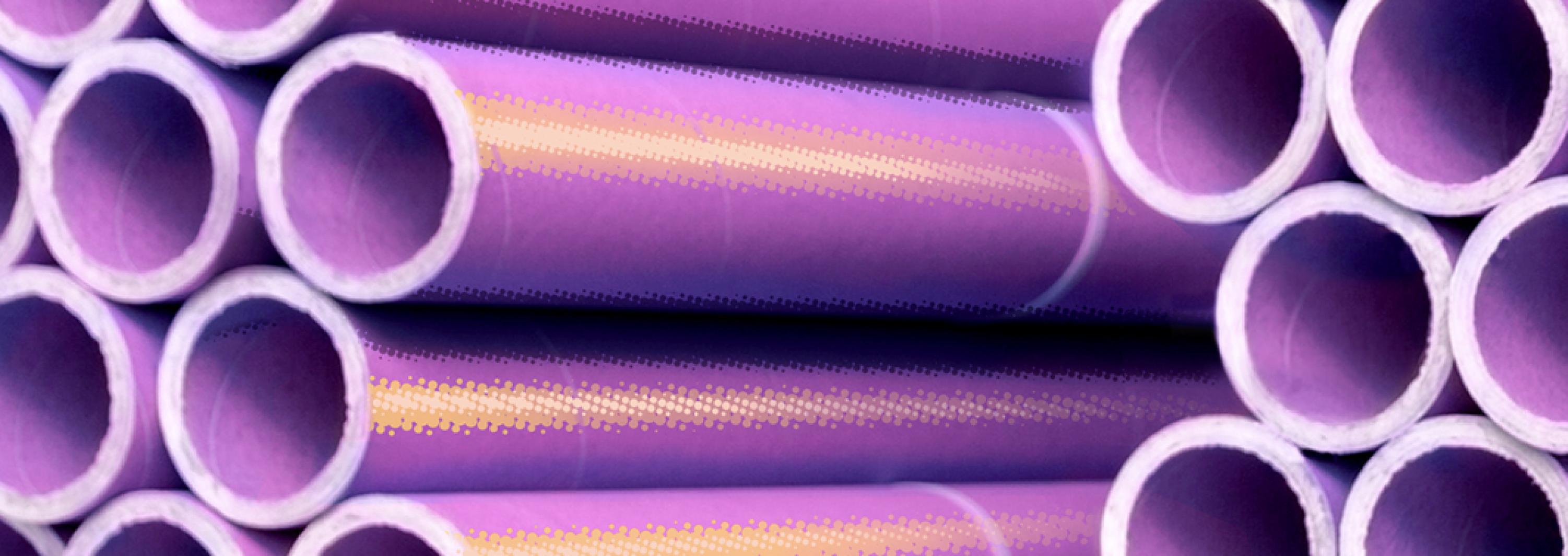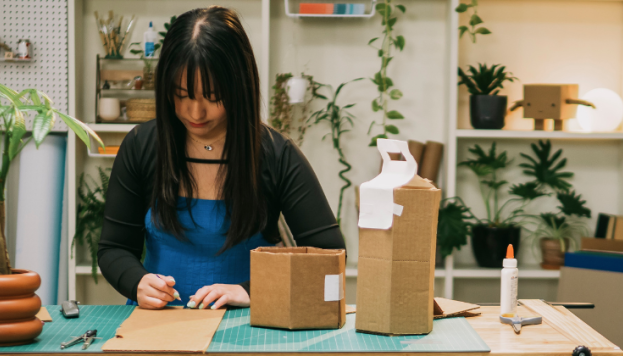
Paperboard tubes are so ubiquitous that it’s easy to overlook their strength and presence. From holding chips and dispensing paper towels to housing 2,000-pound rolls of shipping and packaging paper and carrying concrete, paper cores and tubes do more than meets the eye.
Unboxing the Facts About Paper Tube Packaging
Sometimes referred to as cardboard tubes, these hollow cylinders are made from wood pulp bases like paperboard, kraft paper, fiberboard and paper-adhesive composites. At the beginning of the 20th century, London manufacturers first started making paper tubes for storage, as protective shells and as cores to wrap paper and fabric around. Over the years, scientists, engineers and packagers have found new ways to use these strong cylindrical packages.
Paper tubes serve many industries. Examples include shipping, packaging, and pulp and paper, as well as food processing, automotive manufacturing, mechanics, material handling, construction, textile, art, healthcare and horticulture.
What Paperboard Tubes Do Well
Paper tubes are flexible, strong and offer a good strength-to-weight ratio. They’re made to protect their contents, but they’re still lightweight, which reduces shipping costs. And heavy-duty paperboard tubes are resilient, making them good packaging solutions for high-impact mailings.
Paper tubes also offer unique branding and customization opportunities by providing a surface to display company labels and striking designs, which can lead to iconic packaging and instant brand recognition.
Load-bearing construction tubes, like those used for concrete columns, are also built of this cardboard, making them easy to cut to the appropriate length. The thicker a tube, the more weight it can support.
Another key perk of paper-based tube packaging is sustainability. Paperboard tubes are made from recyclable materials and can frequently be recycled or reused.
What Type of Paperboard Tubes Exist?
To see how paperboard tubes could be the answer to your next packaging question, examine their variety of uses. Then think about your operations and products as they relate to the forms and functions of the paper tubes described below.
Caulking tubes: Spiral wound and used in construction to help dispense caulk.
Kraft tubes: Made from quality kraft paper, these are especially hardy during transit and are frequently used as postal tubes.
Paper cans: Primarily used for packaging merchandise including cosmetics and food, like chips. Paper cans traditionally sport steel bottoms, but today’s technology has made it possible to equip paper cans with paper bottoms, giving business decision-makers more sustainable choices for product packaging.
Paper cores: Used for packaging inside something else, where the packaging provides strength and structure. Items that use paper cores include paper towels, toilet paper, electrical wires and automotive or mechanical grease cartridges.
Shipping tubes: Used to protect items from denting or tearing in transit. including documents, papers and art.
Sonotubes®: Heavy-duty tubes that contractors use to form concrete pillars, columns and other constructions like light poles and stub piers for elevated ramps.
If paperboard tubes can support concrete columns and dispense your favorite snack foods, imagine what they could do for your business.



